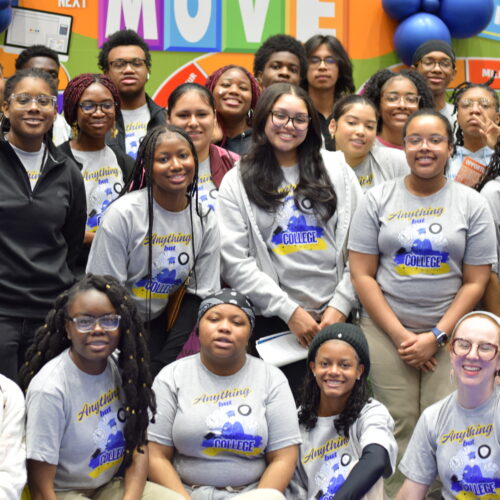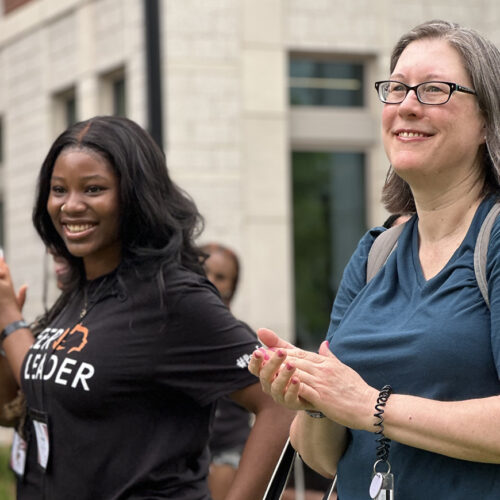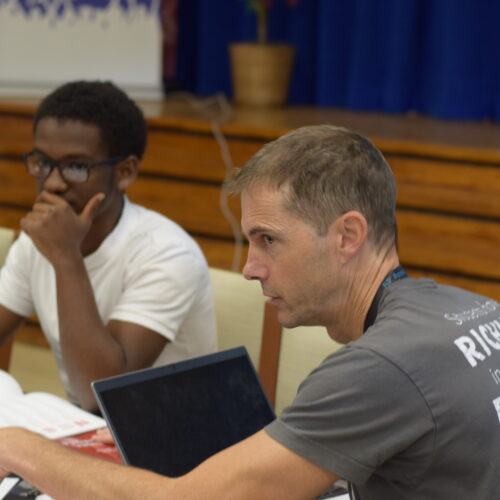
In reading the recent coverage around the college admission season it’s easy to think that there is one educational path whose most urgent obstacle occurs in the 12th grade, when high school seniors confront the daunting acceptance rates of the nation’s most elite colleges.
Many of my friends and colleagues with college-aged children have expressed an anger that their children, who have striven and achieved for twelve years, have to navigate such treacherous shoals where the odds are they might wind up in a less prestigious school than the ones their parents attended.
Having just last year experienced this same anxiety with my son, I understand. But I also know, as the former director of a charter school and currently the head of a college access organization, there are millions of students in our country whose educational pathway does not lead to the narrow gate of an elite college—or any post-secondary institution for that matter. Every year, there are approximately 1.1 million 8th graders from low-income families enrolled in our public schools. Yet less than 10 percent of them will finish college by the time they are 24.
There are many reasons attributed to this educational achievement gap—poverty and lack of school quality being the most often cited.
Therefore, it’s natural that many of today’s intervention programs are focused on confronting these barriers. Efforts to improve teacher quality and retention for example and a focus on college readiness metrics are pervasive and important inputs.
But there is another barrier that explains why the college admission madness goes unnoticed by more than half the college-age population this time of year that also requires an intervention effort. And that is the lack of a college-going culture.
Think about it. From an early age the children of affluent parents view college as a given on their journey to the “real world” and, surrounded by peers on the same path, proceed as a herd towards that finish line. Peer pressure is a powerful motivator—it has its benefits.
Many children from disadvantaged neighborhoods have no such expectation or experience to rely on. The college graduation rates for low-income students, particularly African Americans and Latinos, are persistently low—in 1970, just 6 percent had earned a degree. By 2013, that number had grown to only 9 percent. That means the parents of today’s low income teens probably didn’t graduate college and even fewer of their grandparents did. The starting line is missing.
So creating a college going culture in more schools—getting juniors and seniors to see college as a necessary path to their life goals—would seem a critical step to increasing the rates of college enrollment and persistence.
There are some promising efforts underway here. Increasingly, charter school organizations for instance are partnering with universities to send groups of students together to the same colleges so they have friends to push them along towards graduation.
The new federal education bill, Every Student Succeeds Act (ESSA), will for the first time hold high schools accountable for their college enrollment and financial aid application rates, creating an incentive for schools to consider their students’ post-high school plans.
And thousands of college access organizations are operating across the country in partnership with K-12 schools to address the problem. My organization is among them.
Unfortunately, these efforts only touch a small percentage of students who need the services. Getting to scale is always the rub.
But what if high schools began to leverage the assets that already exist within their walls? What if they could harness the motivational power of students themselves to propel more of their peers towards college?
I am not talking about student voice, where we ask students for their opinion. I am not talking about self-advocacy, where students own their learning. I am talking about student agency, where students climb out of their narrow self-interest and take responsibility for their communities.
A growing body of research shows that peer influence is the essential missing ingredient in school reform efforts over the past 10 years. I have seen 17 and 18 year-old juniors and seniors bend the life trajectories of their friends and acquaintances. I have seen principals systematically deploy teams of their students to change the entire college-going culture of a high school, increasing their college enrollment rates by 20 and even 30 percent.
These students have locked their fellow seniors in gymnasiums to research schools, complete applications and fill out financial aid forms. They have taught the juniors in an all-school assembly how to compose a draft of their personal statements. They have each taken on a group of freshmen who were at-risk of dropping out and worked with them to stay in school.
Why does this work? Because who in the world does a 17-year old listen to? Another 17-year old.
Every high school has its most “influential” students and every other teen knows who they are. These are not necessarily the smartest kids—these are the ones who have the most pull with their peers. If they understand the college pay off and enroll, others will want to follow. Frankly, it’s the same psychology that has led many students to follow their peers to the streets.
The value of a college degree is indisputable. It’s time that more students understood that the road they want to be on goes through a college campus. And there’s no better messenger than their classmates sitting in the desks right next to them
This article by Keith Frome, PeerForward CEO originally appeared in The Hill, May 11, 2016.











